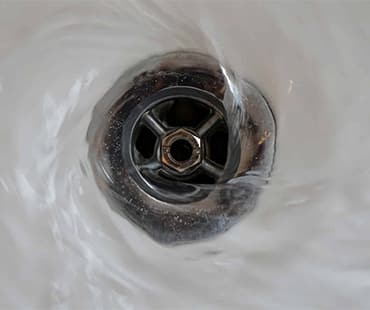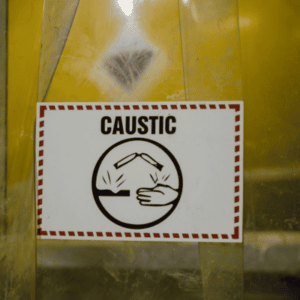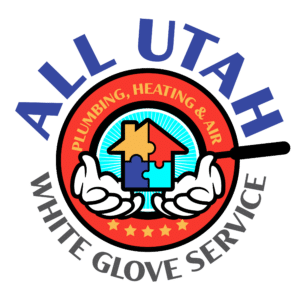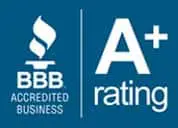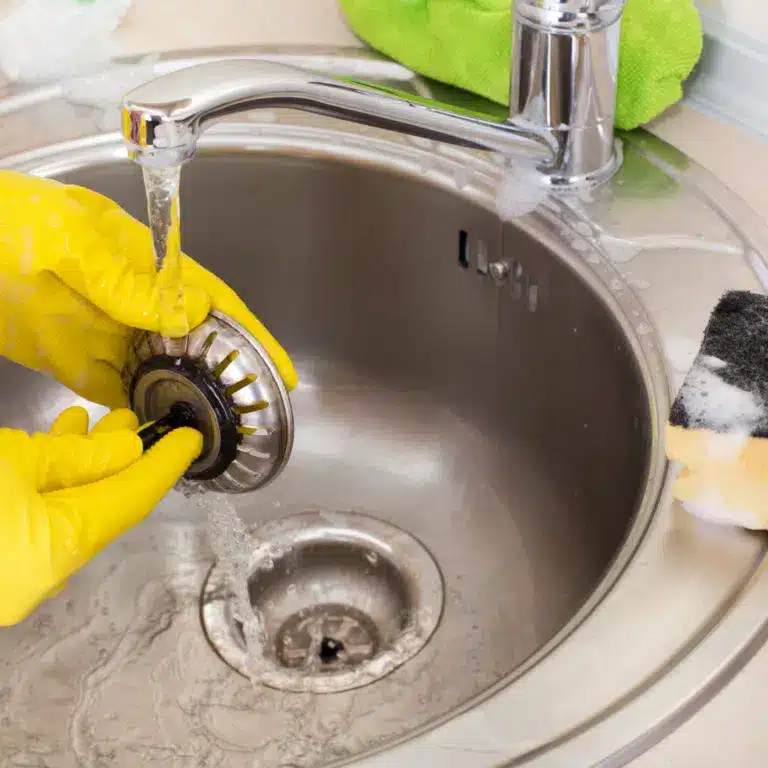
Who likes dealing with clogged drains? Nobody. Well, plumbers, but nobody else is really making a hobby out of it.
So, when you have a clogged drain, you react.
First, it’s confusion about why the toilet isn’t flushing or the sink isn’t draining.
Second, it’s disgust in seeing… you know, gross stuff.
Third, it’s frustration over how you are going to fix the problem.
From here, if you decided to take matters into your own hands, you have two options:
- Chemical drain cleaners
- Drain cleaning appliances
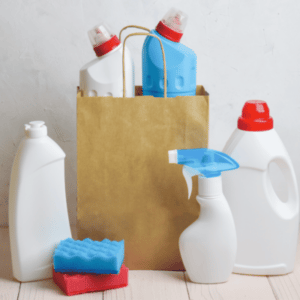 Best chemical drain cleaners for your home
Best chemical drain cleaners for your home
Let’s talk about chemicals first. Depending on the drain (ie not a toilet), this is likely your first option, they are relatively cheap, easy to use, and don’t leave you pulling disgusting gunk out of your drain.
But did you know there are three different types of chemical cleaners?
Each type has different strengths and should be applied to different drains depending on what the drain is used for.
Acid drain cleaners
Best for Bathroom drains
Acid drain cleaners are probably the most common type of chemical drain cleaners. These cleaners work by using strong acids, usually sulfuric or muriatic, to partially dissolve the blockage in your drain. These chemicals also release heat that can be used to dislodge grease-based clogs.
The downside of using strong acids is that they are dangerous, cause acid burns when contacted with skin, and can erode your pipes.
Oxidizing drain cleaners
Best for Kitchen sinks
Still, on the side of acids, we have the less potent oxidizing drain chemicals. Contrary to their counterpart acid drain cleaner, this chemical is typically less acidic and is primarily used to break up organic clogs such as clogs resulting from food.
These cleaners are typically made from bleach, nitrates, and peroxide. Being less acidic, they are safer to handle and will be less corrosive than stronger acids. Regardless, they should be handled with great care!
Caustic cleaners
Best for grease clogs
The last class of chemical cleaners is not an acid. Caustic cleaners are made from bases, on the opposite end of the PH scale from acids. These chemicals are made from substances such as potash and lye.
These chemicals are good for getting rid of grease clogs. But their highly specialized use means that they aren’t commonly used in household cleaners. Although they are not acidic, caustic cleaners can be hazardous if direct contact is made.
Best Drain Cleaning Tools
If chemical cleaners don’t end up working, there are a few tools you can use to unstop a drain.
These tools range in price and can be difficult to use. Not every tool on this list is practical for your average homeowner to need and use. We include them on here because we think it is helpful to see the full range of tools available to use in unstopping your drain.
DIY Homemade tools
DIY homemade tools are not ones that are available on the market. They are cheap, crude tools made from everyday objects in case you are in a pinch. Homemade tools can get caught in your drain causing more problems. We do not guarantee their effectiveness and caution that they may cause minor damage, but they are useful if you have nothing else.
Wire Coat hanger
This is an object found in almost every home. A wire coat hanger is a nifty tool in a pinch. All you need to do is carefully untwist the wires and straighten the coat hanger out. Using pliers or a similar tool, fashion a very small hook at the end of the wire.
Use this contraption to remove hair and other items from your drain.
Baling wire
Baling wire is a less commonly found resource but can be used in a very similar fashion to the coat hanger above.
Plungers
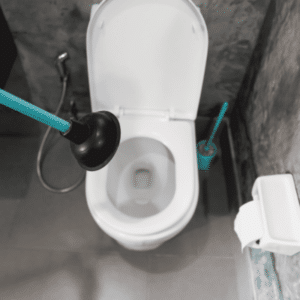
Plungers are mainly used to unclog toilets but can also be used for sinks and other drains. The purpose of a plunger is to force water or air down a drain, temporarily increasing the pressure behind the blog.
This process, when repeated over and over again, effectually pushes on the clog until it gives and flows down the drain regularly.
Standard Toilet Plunger
Your standard plunger can be found in almost every store that sells home appliances. These bell-shaped rubber contraptions are made to gently and repeatedly push on clogged debris in your drain.
This tool is great for toilets and sinks.
Pro Toilet Plunger
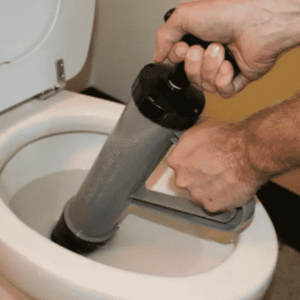
Straying now from the conventional tools used to clear drains, we have the Pro Toilet Plunger, a tool for those with a little more ambition for a quick fix to their clogged drains.
This tool is specially designed to be used on your toilet. Instead of using the gentle surge of water or air that conventional plungers use, the Pro Toilet Plunger uses a contraption to manually force or compress air down your toilet drain.
This tool makes quick work of even the most stubborn toilet clogs.
Toilet Saber
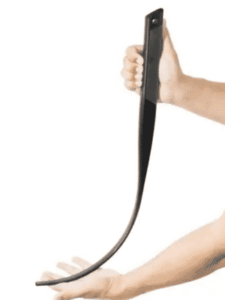
If you are disgusted by the thought of water splashing back on you, consider using another non-conventional tool: the Toilet Saber.
Like the Pro Toilet Plunger, the Toilet Saber was made specifically for your toilet. Instead of using air or water pressure to clean your drain, a Toilet Saber is a tool that can be manually used to clear out clogs.
This has its own limitations. The fixed length and rigidity of this tool make it difficult to use if your clog is lodged further along in the plumbing of your toilet. However, it is a great tool for shallow clogs and for those who prefer to avoid the gurgles and splashes caused by conventional plungers.
Drain Augers
Toilet Auger
If you want to make quick work of a clogged toilet, get a toilet auger. This tool uses a flexible and sturdy cable that can snake its way through your bathroom pipes and completely unblock your toilet.
The Toilet Auger doesn’t need air or water to clean out your toilet, its long, flexible cable does all the pushing. Our plumbers will use this tool to quickly unclog even the worst toilets.
This tool is a professional-grade instrument used by plumbing professionals across the country. It may be too bulky for the average homeowner to justify storing it next to their toilet, but it sure gets the job done!
Drain Snakes
Small Drain snakes
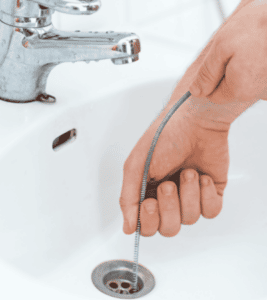
Hand-held drain snakes are a step up from using coat hangers and baling wire. The size and shape of handheld drain snakes can vary. Typically, though, they are made from materials that have a lower risk of damaging your plumbing than the previously mentioned DIY fixes have the potential to do.
Drum Machines
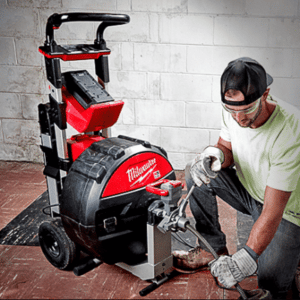
If you have a stopped hidden in the deep recesses of your plumbing, even a ten-foot drain snake might not be able to touch it. This is why professionals are trained to use drum machines with lots of extra cable length.
The process is commonly known as rodding. The tools used with this method are expensive and can be dangerous to use which is why you should have a professional handle them.
They are very effective though.
Drum machines constantly spin a long cable with special attachments to its head. As it progresses down the drain, the cable and attachment effectively drill through clogs and clears your pipes for unrestricted water flow.
If you have a mainline clog that is preventing all the drains in your house from emptying into the sewers, a quick clean with a 100-foot drum machine is typically all that is needed to resolve the issue.
Hydro Jetting
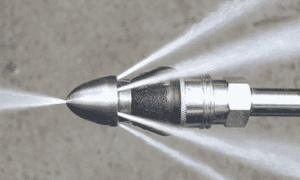
It’s hard to imagine any clogged drain requiring more attention than any of the other methods we have already described, yet, there are some clogs that need more than any of these methods can provide.
Hydro jetting is the preferred way to clean out pipes that you find clog frequently. Rodding can effectively punch a hole through a clog, but might not be able to clear away all the debris that keeps catching larger particles as they make their way through your pipes.
Hydro jetting uses a high-pressure water jet that can cut through and clear away almost any buildup in your pipes. The intense jet of water cuts through the grease and grime clouting your pipes, preventing further blockage.
Get Professional Plumbing Care
There is a lot this list doesn’t cover, such as situations that require pipe replacements, or details about the many different ways a plumber may handle a clog. It’s our hope that this provides you with the details you need to take care of your drains on your own.
In the event you can’t or don’t want to take matters further into your own hands, we here at All Utah Plumbing, heating & air are ready to clean your pipes and get your plumbing back in order.
Call us to see which of our professional services is best for your needs!



